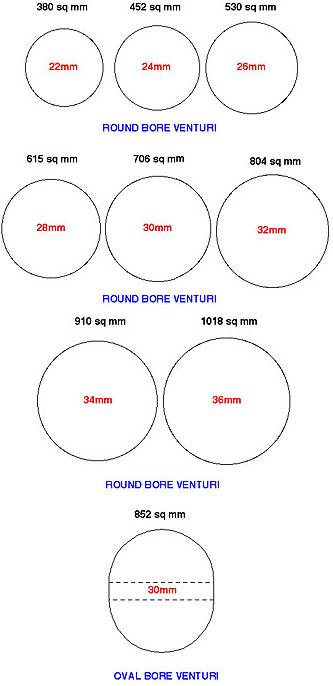Carburetor - General
The standard carburetors on both Vespas
and Lambrettas are perfectly suited for what they do. The later Vespa
model even allows for mixing of gas and oil right in the venturi. But
when an engine has the capability to burn more gasoline there is a
point at which the standard carb must be re-jetted or replaced to let
more air/gas into the cylinder.
This section is intended to give a very
basic intro into carburation and what affects it can have on a motor. I
have only had experience with a couple of engines and carbs but it
should serve as a starting point.
To start with, carburetors are usually
referred to with a millimeter dimension. This dimension is the size of
the venturi, which is where air and gasoline are mixed. Below is a shot
of a typical SI24/24E carb off a Vespa P200E. The arrow shows the
diameter of the circular venturi which is 24mm.

Most tuned bikes can take advantage of a
larger venturi to allow more of a charge into the cylinder at each
revolution. The percentage of area between different sized venturi is
more complicated than simple addition. A 14mm venturi has an area of
154 square millimeters, but a venturi of 28mm (double the diameter) has
an area of about 615 square millimeters - about 4 times larger.
Below is a chart showing typical venturi
diameters with the square millimeter area of each one noted above. It
illustrates that the difference between a standard 24mm Vespa carb and
an aftermarket 32mm round bore carb is close to twice the area even
though it is an increase of only 8mm or 30% the 24mm diameter.

I also included a cross section of an
oval bore carb like the Dell'Orto VHSA 30mm. The
bore is extended by splitting a circle and enlarging it as shown above
with the two dashed lines. Because it is oval it is actually 1.2 times
larger than a 30mm round bore carb and has a larger area than a 32mm
round bore carb. If you are interested in downloading a better
resolution copy of the above image for reference, click here for
a .pdf file.
Next Section -->
|








